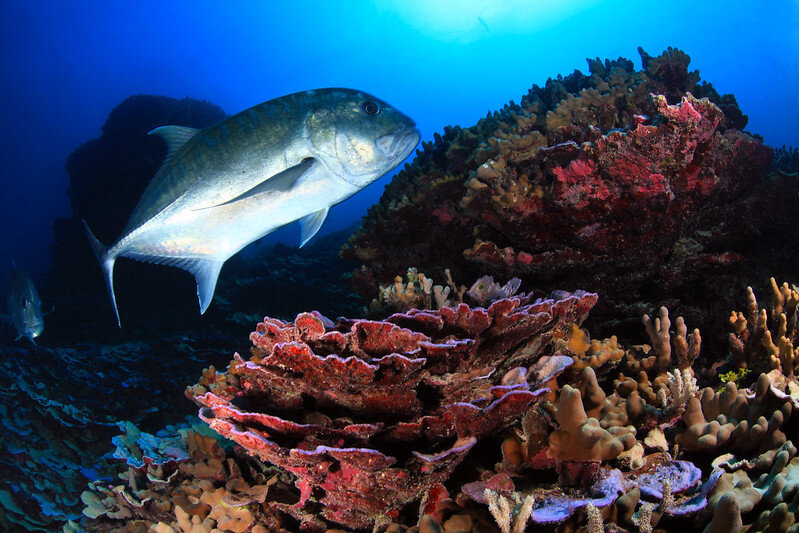We are happy to report that we have continued to hear humpback whales and other species as we passed the North Hampton Seamounts and Neva Shoals at the very north end of our voyage. Of note, the Sea Surface Temperatures (SST) continued to drop. Last night we rounded the north end of Lisianski Island and are now officially headed back down the other side of the chain making our way back home. Below are some pictures from Europa, as well as a couple of audio files from her voyage to the north end of the chain.
A booby catching a ride on Europa
A beautiful sunset seen from Europa
Located 208 kilometers (129 miles) northwest from Laysan is the island commonly known as Lisianski. Another name for Lisianski is Papa‘āpoho. It is a combination of two words. Papa means a reef, flat surface, or foundation and ‘āpoho means depression, hollow, or pitted. Combined, they describe the depression between two tall sand dunes which may have once been the location of a lake similar to the one on Laysan.
About 20 million years ago, geologic forces raised the tip of a huge coral bank above sea level. Today, Lisianski Island is 1.5 square kilometers (381 acres), about the size of Honolulu. While its land mass is relatively small, Lisianski’s coral reef, known as Neva Shoals, is massive at 310,000 acres or 1,254.5 square kilometers, an area nearly the size of O‘ahu.
The first western explorer to reach the island was the Russian Captain Yuri Feodorovich Lisyansky in 1805. The captain ran aground in his ship, the Neva, after which the shoal to the south was named. Various ships visited Lisianski throughout the 1800s to harvest fish, turtles, guano, beche-de-mer (sea cucumbers), sharks, and seals. During this period rats and mice arrived on Lisianski in the 1800s as accidental introductions, and rabbits were purposely introduced by humans as a food source. These mammals consumed most of the vegetation and negatively impacted the terrestrial ecology. Captain John Paty claimed the island for the Kingdom of Hawai‘i on behalf of Kamehameha IV on May 10, 1857. In 1890, the North Pacific Phosphate and Fertilizer Company acquired a twenty-year lease to mine the island for guano. From 1904 to 1909 Japanese feather poachers harvested birds from the island. This activity was stopped after Lisianski became part of the Hawaiian Islands Bird Reservation in 1909.
Today, Hawaiian monk seals and green sea turtles are common visitors to Lisianski's sandy white beaches. Migratory shorebirds seen on the island include the kolea (golden plover), ulili (wandering tattler), and kioea (bristle-thighed curlew). Nearly three-fourths of the Bonin petrels nesting in Hawai’i make this island their home. In some years, more than a million sooty terns visit Lisianski.
Photo by: Greg McFall/NOAA Office of National Marine Sanctuaries, 2011
Coral and giant trevally / ulua aukea (Caranx ignobilis) at Lisianski Island in Papahānaumokuākea Marine National Monument.
Reef fishes of the nearshore waters are abundant and diverse. Researchers have found predators near Lisianski's reefs, such as sharks, to be very aggressive. Even ulua (Trevally jacks) will harass divers and small boats. The reefs of Lisianski and surrounding Neva Shoals are called "coral gardens" by some scientists because of their abundance of coral and the variety of growth forms assumed by their colonies, including structures resembling spires, castles, and a variety of other shapes.





